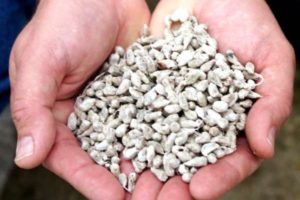 Products of the cotton plant include fiber, seed, and extraneous matter, sometimes referred to as cotton gin bi-product. Some of these materials are used for animal consumption and must be free of harmful components. The Cotton Engineering Program is developing methods to reduce the incidence of pathogens and other contaminants in cotton seed and bi-product.
Products of the cotton plant include fiber, seed, and extraneous matter, sometimes referred to as cotton gin bi-product. Some of these materials are used for animal consumption and must be free of harmful components. The Cotton Engineering Program is developing methods to reduce the incidence of pathogens and other contaminants in cotton seed and bi-product.
Projects:
-
Depolymerizing lignin in cotton gin bi-product with high voltage atmospheric cold plasma
The Cotton Engineering Program is using ACP as an alternative pre-treatment method to separate lignin from cellulose and hemicellulose in cotton gin bi-product. Our current work explores the impacts of reactive gas species produced by ACP pre-treatment on hydrolysis and fermentation of cellulose. Likewise, we are identifying methods to increase the lignin degradation for production of high value chemicals (aromatics, alkanes, and alcohols).
-
Atmospheric Cold Plasma (ACP) ACP as a rapid response treatment for cottonseed
Mycotoxin contamination of cottonseed and cottonseed meal can lead be alleviated by treatment applications with ACP. The Cotton Engineering Program is currently working on identifying key parameters for treatment of these commodities for rapid disinfection. This will increase the availability of the meal as an animal feed and decrease instances of seed contamination during storage.